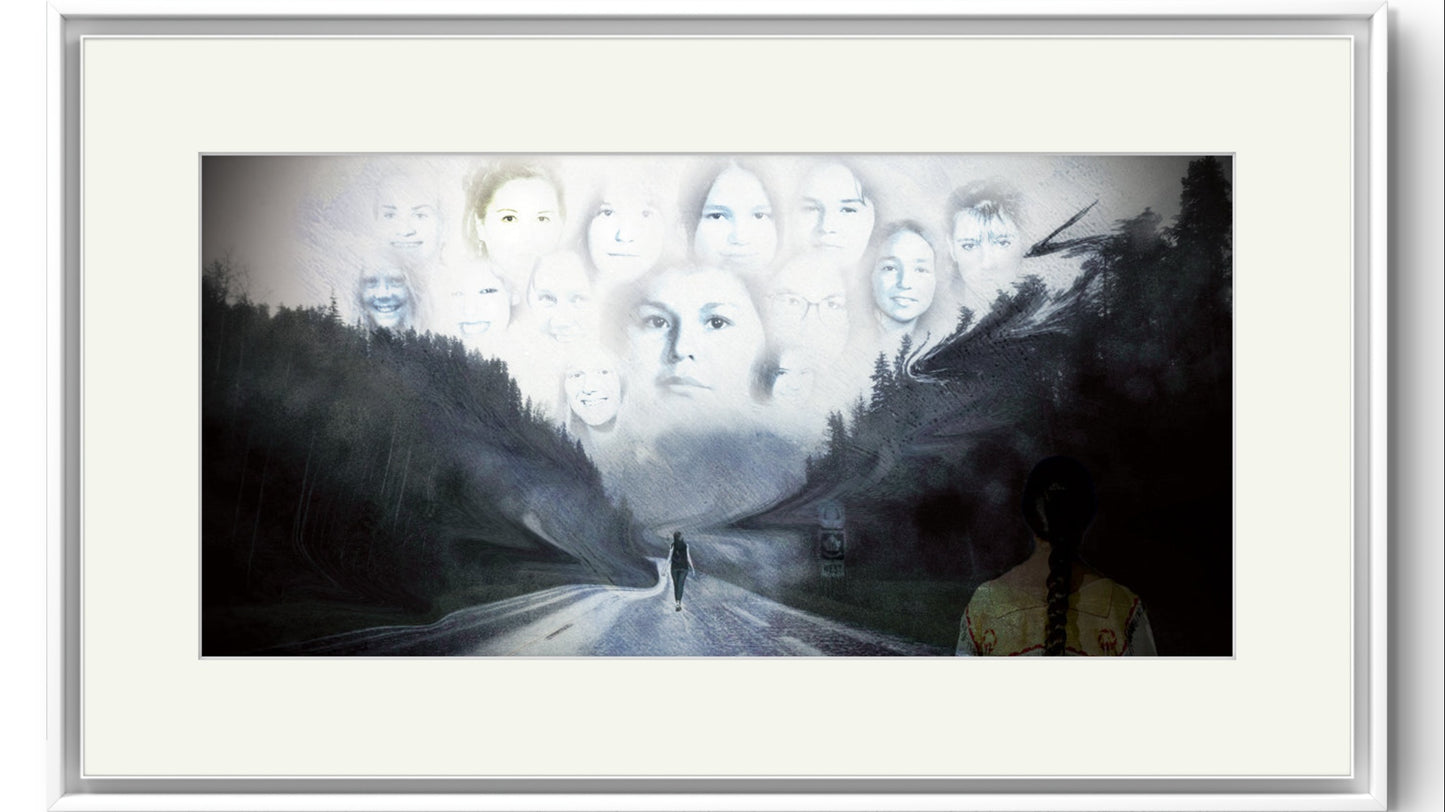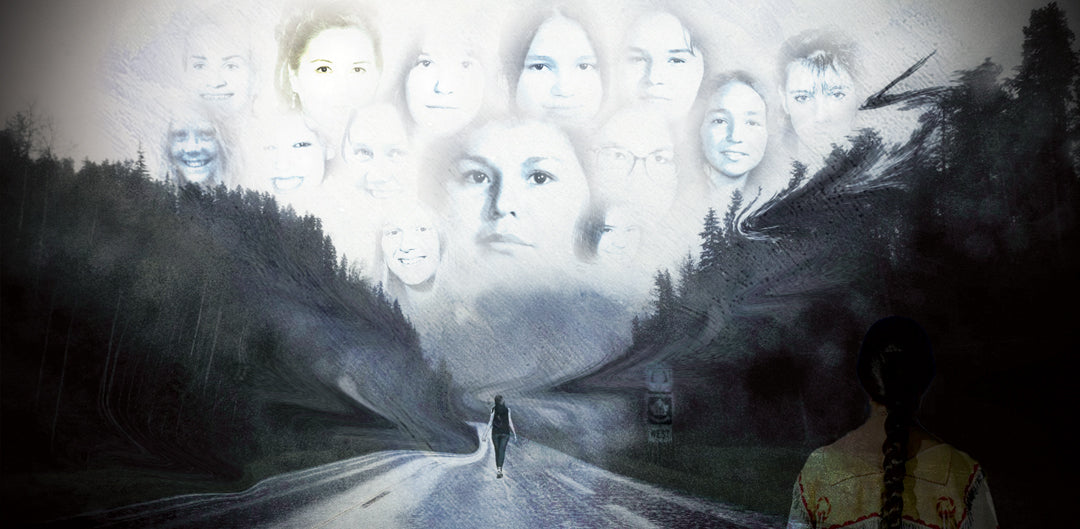Eyeconic Warriors
Highway Of Tears
Highway Of Tears
Couldn't load pickup availability
The Highway of Tears is a stretch of road that winds through the heart of British Columbia, shrouded in a darkness that no daylight can lift. For decades, this highway has been a silent witness to the disappearances and deaths of countless Indigenous women and girls, their lives claimed by violence, their stories too often dismissed. The name itself "Highway of Tears" speaks to the endless grief that has soaked the land, to the sorrow that echoes through the forests and mountains along its path.
This highway, once a route of connection, has become a place of fear and loss. Families have sent their loved ones down this road, only for them to vanish into the mist, leaving behind nothing but aching questions and empty arms. The trees that line the highway have heard the cries of mothers and fathers, have seen the tears that fall like rain, and have stood as silent sentinels to the injustice that haunts this place.
For the Indigenous communities, the Highway of Tears is more than just a road it is a symbol of the systemic neglect and violence that has claimed the lives of their women for far too long. It is a reminder of the failures of authorities who have turned a blind eye, who have let these tragedies unfold without answers, without justice. But it is also a place where resilience is forged, where the memories of those lost are kept alive by those who refuse to forget.
Every mile of this highway carries the weight of broken hearts and shattered dreams, but also the unyielding strength of a people who continue to fight for their daughters, their sisters, their mothers. The Highway of Tears is a scar on the land and a wound in the soul of a nation, demanding to be healed, demanding that the tears no longer fall in vain.
Share




